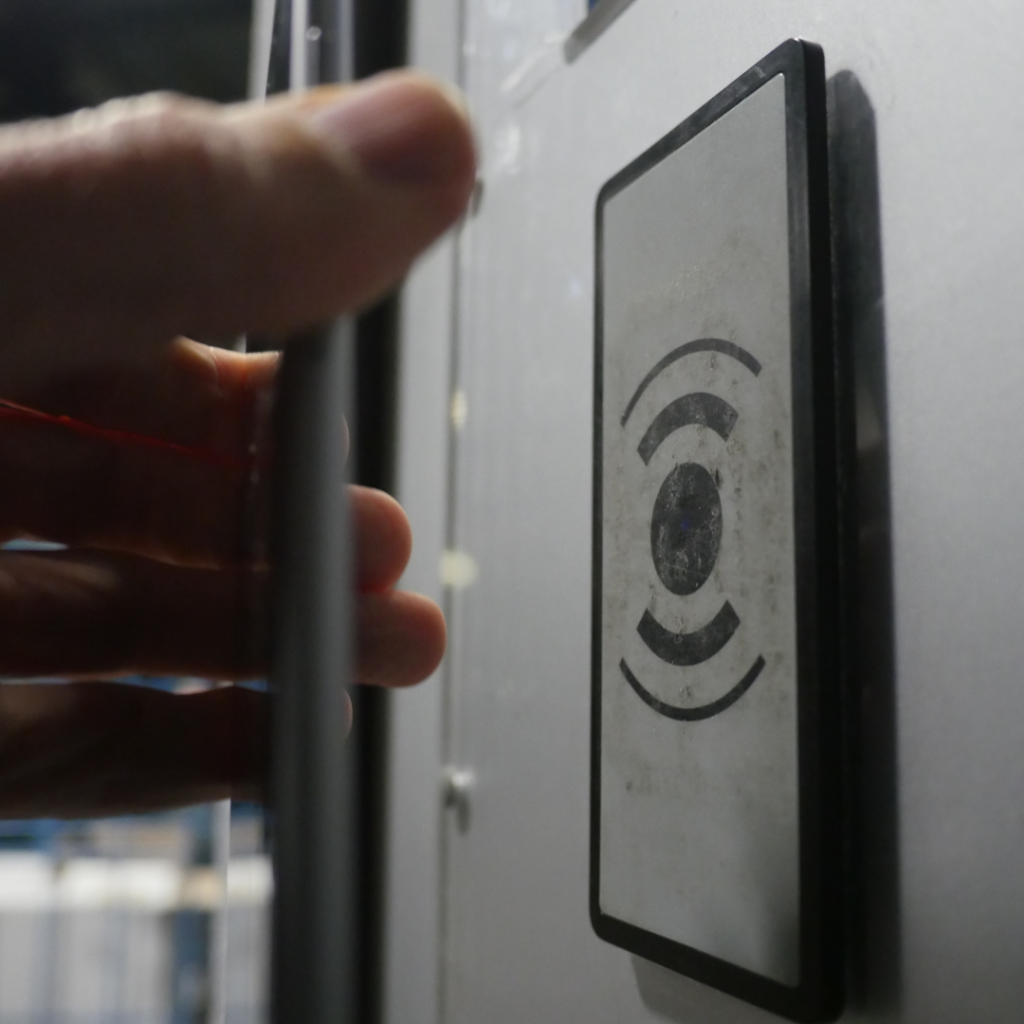Some customers often wonder what technology their apartment key fobs use. Are they RFID or NFC? In today’s blog post, we’ll answer this popular question and help you better understand the differences between these two technologies. While a key fob can technically use either RFID or NFC, most commonly, they operate on RFID technology. Let’s dive into the details.
What Are RFID and NFC Technologies?
RFID (Radio Frequency Identification): RFID is a wireless communication technology that uses radio waves to transfer data between a reader and a tag (or transponder) attached to an object. RFID is commonly used for applications like access control, inventory management, and asset tracking. RFID operates over varying ranges depending on the frequency and system used, but typically low-frequency RFID (such as the 125 kHz or 134.2 kHz used in apartment key fobs) requires a range of 1 to 10 centimeters. This makes RFID key fobs suitable for access control, as the tag and reader must be in close proximity, ensuring secure and intentional communication. Unlike NFC, RFID does not require a direct line of sight between the reader and the tag.
NFC (Near Field Communication): NFC is a specialized subset of RFID technology designed for short-range communication, typically within 1 to 4 centimeters. NFC operates at a frequency of 13.56 MHz and allows devices (such as smartphones or payment cards) to communicate when in very close proximity. NFC is widely used in mobile payment systems (e.g., Apple Pay, Google Pay) and secure access control systems. Unlike some RFID systems, NFC requires very close contact to function, enhancing security by limiting communication to intentional interactions.
Are Key Fobs RFID or NFC?
Most key fobs are RFID-based. RFID fobs are designed for quick and reliable access control, making them ideal for unlocking doors, gates, or elevators. Although NFC fobs exist, they are less common in traditional apartment or building access systems. NFC is more likely to be found in applications where two-way communication is needed, such as with smartphones.
Why RFID Is Common in Key Fobs
Convenience: RFID allows you to access doors without needing to align your fob directly with the reader.
Range: RFID readers can detect fobs from a few inches to several feet away, depending on the system.
Simplicity: RFID technology is efficient for one-way communication, which is typically all that’s required for access control.
Our Services: We Copy RFID Fobs Only
At MiniFob, we specialize in copying RFID key fobs to provide you with backups or replacements. If you’d like to learn more about how RFID technology works, check out our blog post, How Do Fobs Work for a detailed explanation.
Conclusion: Are Key Fobs RFID or NFC?
To summarize, key fobs are usually RFID rather than NFC. While both technologies share similarities, RFID is the go-to choice for most apartment and building access systems due to its range, simplicity, and reliability. If you need a spare or replacement RFID key fob, MiniFob offers quick and reliable copying services to ensure you’re never locked out.
For more insights into key fob technology and services, stay tuned to our blog!



Trackbacks/Pingbacks